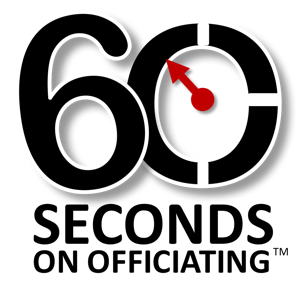
The Problem with Free Throws
After watching in person or on online (courtesy of YouTube and several scholastic websites) all or part of quite a few high school games, it was surprising to notice the alarming number of free throw lane violations that were either missed by the officials working the game, or the crew’s apparent decision to simply chose to ignore the infractions.
Now this is NOT referring to scenarios where players maybe step into the free throw lane area just a split second before the ball touches the rim (this not a discussion on making nit-picking calls); but rather the cases where a player clearly violates the marked lane space provisions and it is not penalized.
And this seems to be the case in about 90% of the games you’ll watch from the stands or on television.
When was the last game you watched, or worked, where there was a free throw violation called?
Is it really possible to go an entire game without ONE free throw violation?
Possible … but more unlikely not. The reason may be is that good officials by nature strive to stay ‘in the background’ of each game they work and may see making this ruling as a ‘game interrupter.’ And officials are customer service oriented, meaning, “if the coach isn’t asking for it; we aren’t calling it.”
Whatever the root cause is for the lack of better enforcement of this infraction, REF 60 would like to offer a few tips to help clarify your understanding of illegal movement during free throws that will hopefully strengthen your resolve to call the obvious lane violations when they occur in your area.
- PRE-GAME DISCUSSION: Make sure your crew discusses free throw coverage and calling violations in your pre-game conferences. Make it a habit to discuss who covers what players and determine what the crew’s philosophy will be on calling free throw violations early in the contest to show the crew’s commitment to enforcement, so as not make a free throw violation ruling in the second half that wasn’t called in the first.
- WHEN DO RESTRICTIONS END? Remember players are restricted until the try touches the ring, backboard, or free throw is over. As an NFHS official are you mistakenly thinking it’s OK for players to move into the lane area on the release (like NCAA); or are you just subtly deciding to ignore this infraction? If you’re passing on making the call where a player gained a clear advantage by committing an infraction (leaving early and securing possession of the ball on a missed free throw), the question becomes, “what other violations are you willing to ignore?
- SNEAKY PLAYERS: On the top of the list of free throw violations NOT whistled are the “spin and scoop” moves from players in the 2nd occupied lane spaces. These are the players (of the shooting team) that will spin and sneak behind the opponent in the 1st space, on the release of the free thrower, to gain an unfair advantage. Is this violation being called when it occurs in the games you are working?
- ABLE TO EXPLAIN WHAT YOU CALL: Many officials are of the mind set, ‘if I can’t explain it, then I don’t call it.’ REF 60 would suggest that when it comes to free-throw violations, you understand them enough to confidently rule on them.
Here are some key fundamentals to keep in your head for NFHS contests:
- Restrictions for all players apply until the ball touches the ring or backboard (NFHS) vs release (NCAA).
- The first (or only) violation by the offense causes the ball to become dead immediately.
- If the violation is by the free thrower’s opponent and the try is successful … then ignore it. If unsuccessful you should have ruled a delayed dead ball and award a substitute free throw.
- If there is a SIMULTANEOUS violation (by each team), the ball is dead. No points can be scored and award the remaining free throws (if any). Or if none, then play is resumed by the team entitled to the AP Arrow.
Here’s the one that makes it easier to administer. If the first violation is by the free thrower’s opponent, then followed by a second violation by the free-thrower (or team mate) then you can IGNORE the 2nd violation, provided both offenders are in marked lane spaces. If the 2nd violation is by the free thrower or someone behind the free-throw line extended and the 3pt arc, then penalize both.
Take special notice in your next game and critically evaluate your performance around judging and ruling on free throw violations.
We invite you to share your comments and your perspective on this topic with our 60 Seconds on Officiating global community.
Rule References
NFHS 9-1-3 and 4; 7-5-2c, NCAA 9.1
